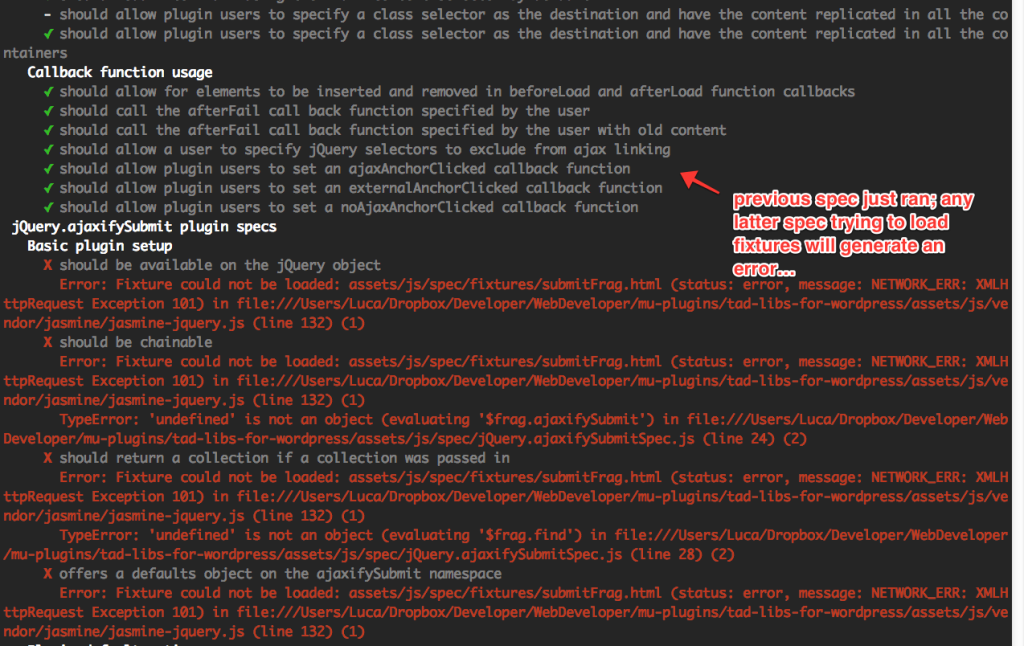I’ve been working with Jasmine a lot these days and while the framework works like a charm an intricate and still to be solved (by me) problem blights its grunt application. [caption id=“attachment_955” align=“aligncenter” width=“1024”] Xhttp what… ?[/caption] The problem seems to be related to PhantomJS,
Xhttp what… ?[/caption] The problem seems to be related to PhantomJS, grunt-contrib-jasmine uses it to run the tests, and, after a quick try with a proposed solution (Gruntfile.json file here)
jasmine: {
src: 'assets/js/src/*.js',
options: {
vendor: [
...
],
specs: 'assets/js/spec/*.js',
keepRunner: true,
'--web-security' : false,
'--local-to-remote-url-access' : true,
'--ignore-ssl-errors' : true
}
}
which did not solve the problem I’ve decided to avoid the problems related to cross-domain loading entirely and move to jasmine-fixture.
Almost Emmet/Zen Coding
The library allows writing fixtures like
var $frag = affix('#wrapper #main');
var form = $frag.affix('form#searchform');
form.affix('input.query[type="text"][value="some value"]');
form.affix('input.submit[type="submit"]');
to have this HTML on the page
<div id="wrapper">
<div class="main"></div>
<form id="searchform">
<input type="text" value="some value" class="query">
<input type="submit" class="submit">
</form>
</div>
while this might not seem much of a gain being able to write such a markup without embedding quoted HTML in JavaScript, without using external and unstable fixtures and without having to worry about removing and reloading fixtures is a bonus to me.
Of course doing it in the beforeEach method makes it all fantastic.
What’s missing from a full Emmet/Zen Coding port is the possibility to add multiple children in a batch.
Little gotcha
The code
var input = affix('input[type="text"][value="some value"]');
will not generate the expected result of
<input type="text" value="some value">
but will instead stop at
<input type="text">
The odd behavior seems to be resolved adding an id or class attribute like
var input = affix('input.query[type="text"][value="some value"]');
to have markup like the HTML shown above printed to the page.